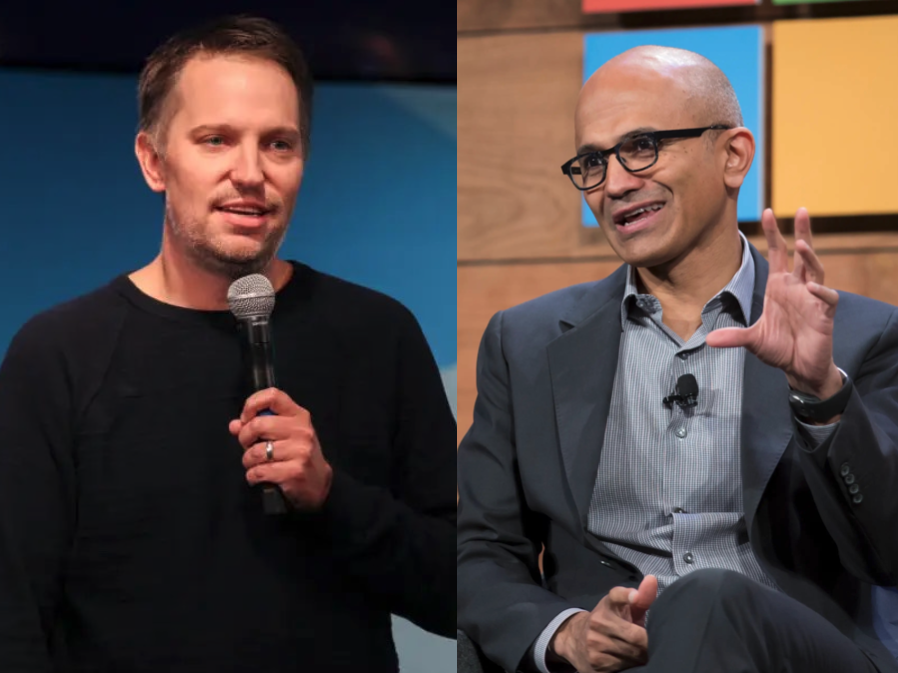
Kelly Sullivan/Getty Images for LinkedIn; Stephen Brashear/Getty Images
- The CEOs of LinkedIn and its parent company Microsoft are pausing plans to return to in-person work indefinitely.
- Microsoft previously aimed for an October 4 reopening, but cases of COVID-19 have continued to rise.
- The CEOs told CNBC they will be focusing on utilizing new technologies and workflows to adapt to an indefinite remote work structure.
- See more stories on Insider's business page.
The CEOs of Microsoft and LinkedIn aren't setting any expectations for a complete return-to-office. Instead, they are rethinking their approach to "flexibility."
Satya Nadella and Ryan Roslansky, CEOs of Microsoft and LinkedIn respectively, appeared on CNBC's TechCheck to discuss how both companies are looking for ways to support remote work rather than plans for all workers to return to in-office work as coronavirus cases mount, made worse by the Delta variant of the virus.
"We tried [setting a firm return date] and it doesn't work because I think the unknowns on the pandemic and also the other side of it is the worldwide nature of this," Nadella told CNBC. "I sort of also feel that sometimes we think about this pandemic or the impact one region at a time, but it's a connected world. So therefore I think we have to really let [COVID] settle down."
Roslansky echoed the sentiment. "A lot of us thought we may be completely back in-person across the world right now," he said. "And that line keeps moving further and further ahead."
This comes as Microsoft announced on Thursday that it it was indefinitely postponing workers' return to US offices amid surges in COVID-19 cases, first reported by CNBC. The tech giant had previously announced offices would reopen September 7, which was pushed back to October 4 in early August. The decision would affect more than 103,000 Microsoft employees who could return to the office, according to CNBC.
"Given the uncertainty of Covid-19, we've decided against attempting to forecast a new date for a full reopening of our U.S. work sites in favor of opening U.S. work sites as soon as we're able to do so safely based on public health guidance," Microsoft Corporate Vice President Jared Spataro wrote in a blog post.
LinkedIn said in July that it would allow individual teams to decided whether they want employees to work remote full-time, or to adopt a hybrid work model as their offices gradually reopened.
Other companies like Google and Amazon announced their own plans for a return to the office earlier this year, which was met with some hostility from their employees. Tech companies across the board have since said they are more open to remote work flexibility.
Nadella and Roslansky said they are pivoting their efforts to embrace "flexibility" within their work structures. The companies began tracking regional COVID data and employee desires to see how to best capitalize on the remote or hybrid work models indefinitely. They also say that new software innovations can improve managers-employees relationships and culture.
It's "really important to be flexible in your thinking and your approach, trusting your employees to get their jobs done," Roslansky added. "Where it works best for them is one of the most important things we've been seeing in the data."